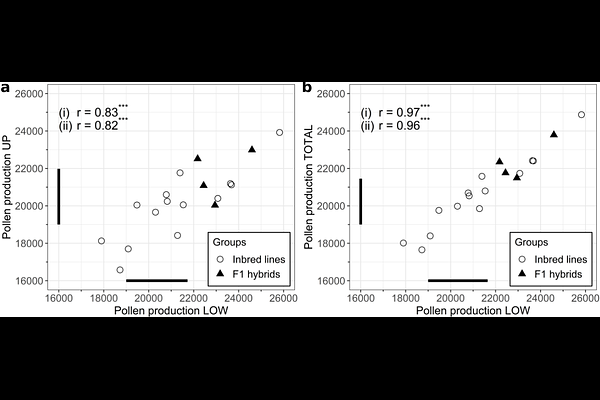Pollen production, pollen viability and autofertility in faba bean (Vicia faba L.) and their relationship with realized paternal success

Pollen production, pollen viability and autofertility in faba bean (Vicia faba L.) and their relationship with realized paternal success
Bruenjes, L.; Link, W.
AbstractIn animal-pollinated plants, pollen dispersal depends on several plant and animal characteristics which may influence a plant\'s paternal success. Different paternal success influences the genetic contribution of a genotype to the next generation. In breeding of partially allogamous faba bean (Vicia faba L.), synthetic populations are developed where equal contributions of genotypes to the next generation are desired to reduce inbreeding. Since direct assessments of paternity are elaborate and costly, we studied whether components of plant fitness such as pollen production and pollen viability can be used as estimates for paternity. In a field experiment and a caged outdoor pot experiment, a total of 18 genotypes (14 inbred lines, 4 F1 hybrids) of faba bean were evaluated for pollen production, pollen viability and autofertility. Pollen production was higher at the lower than at the upper inflorescences and we found mid-parent heterosis for this trait. The relative pollen viability was high (93 % to 97 % in pots, 88 % to 95 % in field) indicating that fertilization success is rather not limited by a low pollen quality. Only in the field, pollen of F1 hybrids was more viable than pollen of inbred lines. Autofertility ranged from 0 % to 98 %, with very marked average mid-parent heterosis for this trait. Autofertility did not seem to be related to either pollen production, pollen viability or paternal success. However, pollen production and pollen viability were highly correlated with paternal success. Hence, data on pollen production and viability might be useful in breeding of synthetic populations to choose parents with small differences in paternal successes, to reduce inbreeding and better exploit heterosis.